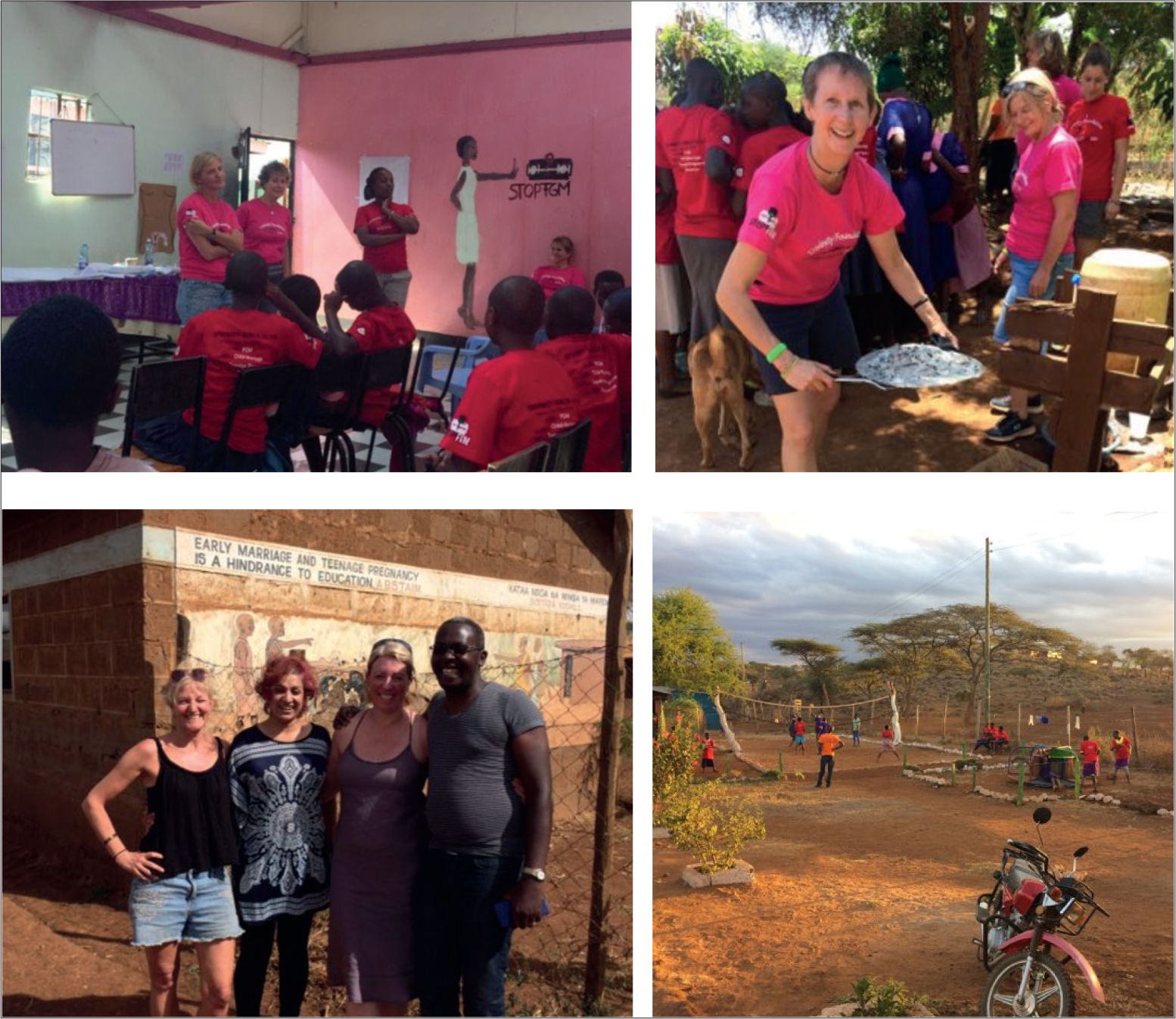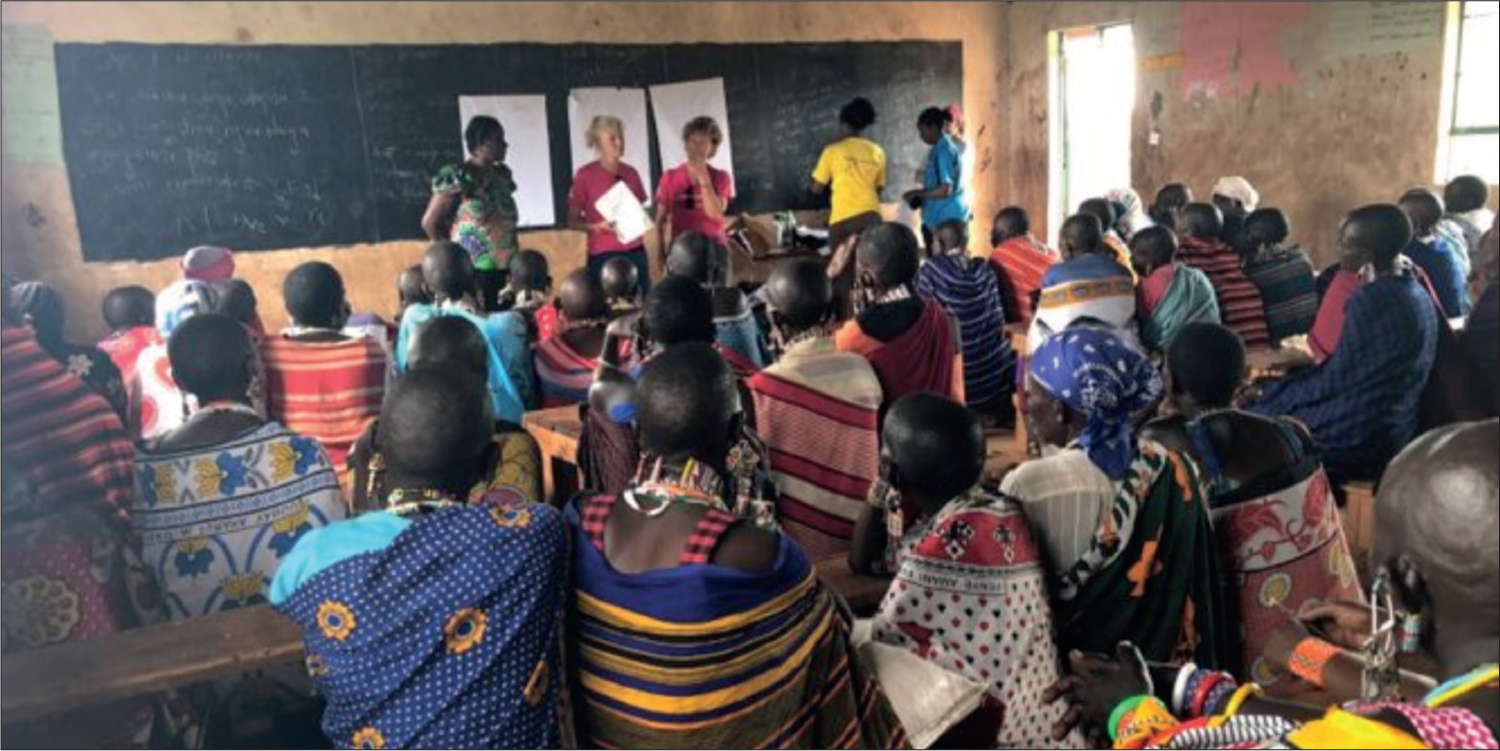Female genital mutilation (FGM) is a global healthcare problem affecting an estimated 200 million women and girls worldwide (World Health Organization, 2020). It is defined as ‘all procedures that involve partial or total removal of the external female genitalia, or other injury to the female genital organs for non-medical reasons. I am an FGM specialist midwife and a FGM lead at Imperial College Healthcare NHS Trust. In 1998, I first began campaigning to set up FGM services after attending a study day run by the Foundation for Women's Health, Research and Development-one of the UK's leading charities campaigning against FGM. In 2007, I opened the Acton African Well Women Community clinic-the first community-based, midwife-led FGM service dedicated to non-pregnant women in the UK. I currently run the Sunflower clinics for pregnant and non-pregnant women at Queen Charlotte's and Chelsea Hospital.
For the last two years, I have joined a group of professionals who make an annual trip to visit an FGM refuge centre in Amboseli, Kenya-close to the border with Tanzania in the foothills of Kilimanjaro. The FGM rescue centre is run by osteopath Navdeep Matharu. Navdeep set up the Divinity Foundation, a humanitarian NGO, in 2008 with the aim of protecting the rights of, and providing support to, abandoned, orphaned or impoverished children.

A total of 37 girls are currently living in the refuge centre and are aged between 12–18 years old. They have all been either rescued from their families before suffering FGM or have had FGM. In some parts of Kenya, FGM is still seen as a rite of passage before marriage. Girls as young as 12 or 13 years old are forced to marry, often to much older, men and are cut prior to their wedding night. The girls end up in the centre either having been identified perhaps by police or community workers, or sometimes having run away on their own.
A charity known as 28 Too Many (2016) produces research to support the fight against FGM. Their most recent statistics state that:
FGM has been illegal in Kenya since 2011 but the law is rarely enforced. However, president Uhuru Kenyatta made a statement on 3 June 2019 calling for the end in this practice in the country by 2022. Our group consisted of two FGM specialist policewomen Leanne Pooke and Gill Squires, and FGM nurse specialists Jennifer Bourne and Jackie Mathers, as well as some of their work colleagues and friends. During the self-funded trip, our itinerary included running a three-day workshop at the refuge centre and participating in an outreach visit to remote Masaai villages to deliver food, clothes and heath/educational workshops.
The refuge centre invites an additional 40 girls from surrounding schools and villages to join the activities for the girls that are resident. I led teaching sessions on FGM, sexual health, puberty and personal hygiene. There was a baking workshop; arts and crafts; sessions on child rights and gender-based violence; drugs and substance abuse; and a workshop run by an American charity called Redthread, teaching the girls to make reusable sanitary pads. We were told that it was not uncommon for girls in rural areas to have sex with men in order to make enough money to buy disposable sanitary pads. We also took part in a nature walk; debate; sports day including an egg-and-spoon race, tug of war, sack race, relay race and final presentation of certificates with dancing and speeches. On the last day of the workshops, there was a football tournament.
Navdeep values community engagement and the importance of involving men in the discussions to prevent FGM. She asked the manager of the local football team if some of the girls could join the local football club and together they have created a girls' team. On the tournament day, several local boys' football teams were fielded to play, as well as the girls' team, and plenty of spectators. Afterwards, there were speeches, food and dancing. Navdeep talked about FGM during the speeches and there were posters in the food tent explaining the difference between male circumcision and FGM, and the health consequences of the different types of FGM.

During our stay at the refuge centre, it was inspiring to hear the girls debate and share their aspirations to become pilots, doctors and lawyers. Most of the girls will stay in the refuge centre until they finish their education as it is not safe to return them to their homes. However, a small number are reunited with their families (only when Navdeep and her team are absolutely certain that there is no risk of FGM).
On another day, we went on an outreach visit to a school in the depths of the Maasai Mara national reserve-a four-hour bus ride away. I led a session, with Gill, teaching approximately 60 Masai women and their babies. We had both Maasai and Swahili interpreters, and the session was held in a dusty classroom with wooden benches and an old chalkboard. We began the session by talking about women's health and hygiene in order to slowly and sensitively introduce the topics of sexual health and FGM. One woman said, ‘We only have to do it when a girl is getting married’. I replied, ‘Well, I'm married and I'm not cut, and Gill is married and she's not cut either’. I described how FGM can increase the likelihood of tearing and bleeding during childbirth; we explained the difference between FGM and male circumcision, emphasising that the intention behind FGM is to stop women having pleasure and that cutting off the clitoris causes the equivalent damage to cutting the penis in half.
We explained that if women are cut then they often don't enjoy sex which then leads to the men being unfaithful or finding new wives. We also said that men would prefer too if the women are not cut as then their women would want to have more sex. The women thought that this was very funny. One woman asked us whether the clitoris will keep growing if it is not cut and another women showed us visually, using her fingers to show how the clitoris is lifted upwards and then cut at the base, what she described as ‘the meat’ of the clitoris.
As the teaching session came to an end, there was suddenly lots of talking amongst a group of women. I asked what they were talking about. One of the interpreters told me ‘the women are saying that they have to leave now so that they get home by 4 pm, otherwise their husband's will beat them’. It was very clear to Gill and I that we still have a long way to go in terms of realising gender equality in some parts of rural Kenya.


